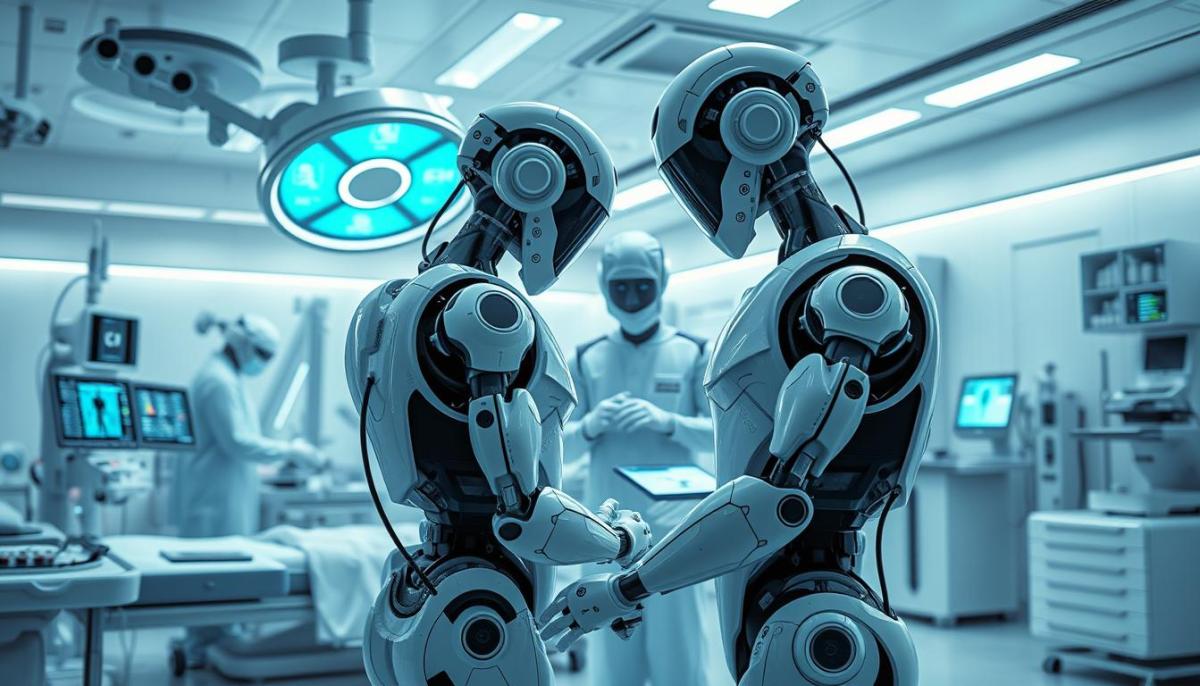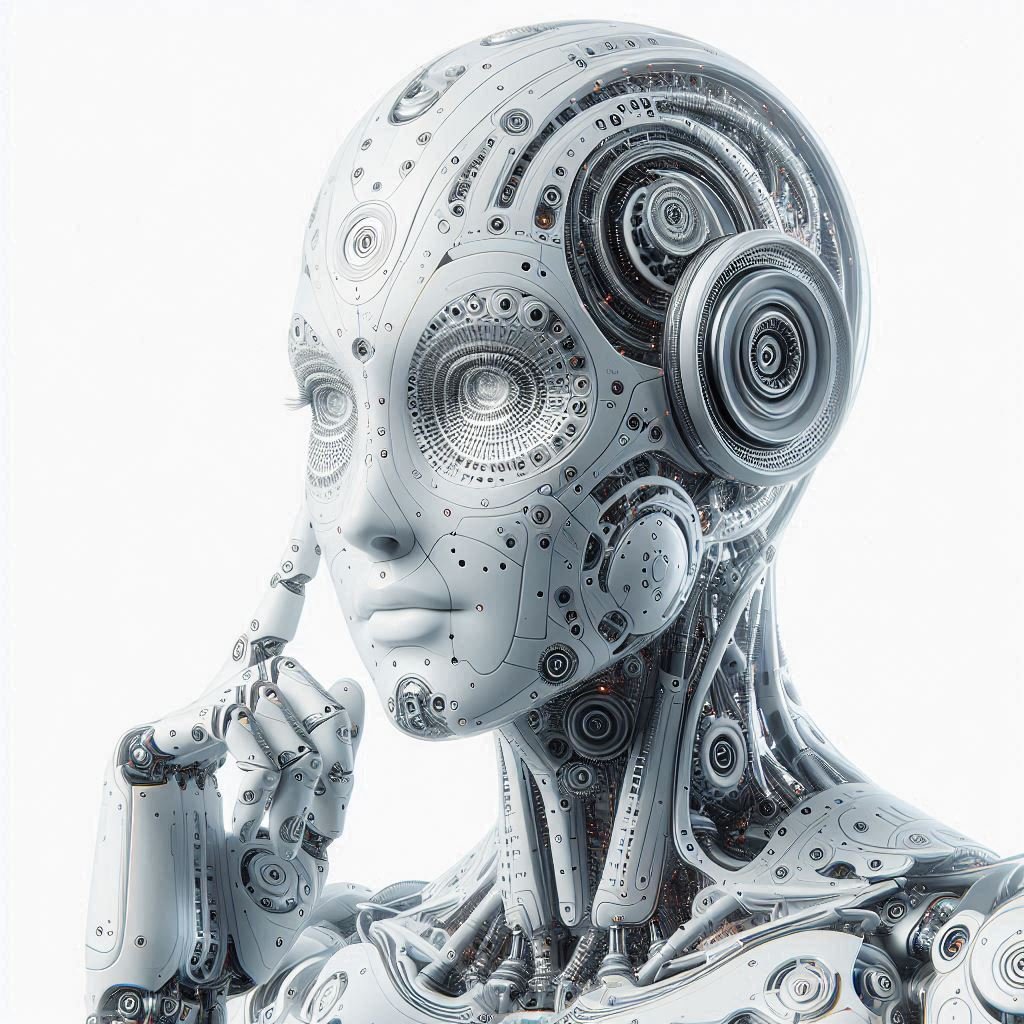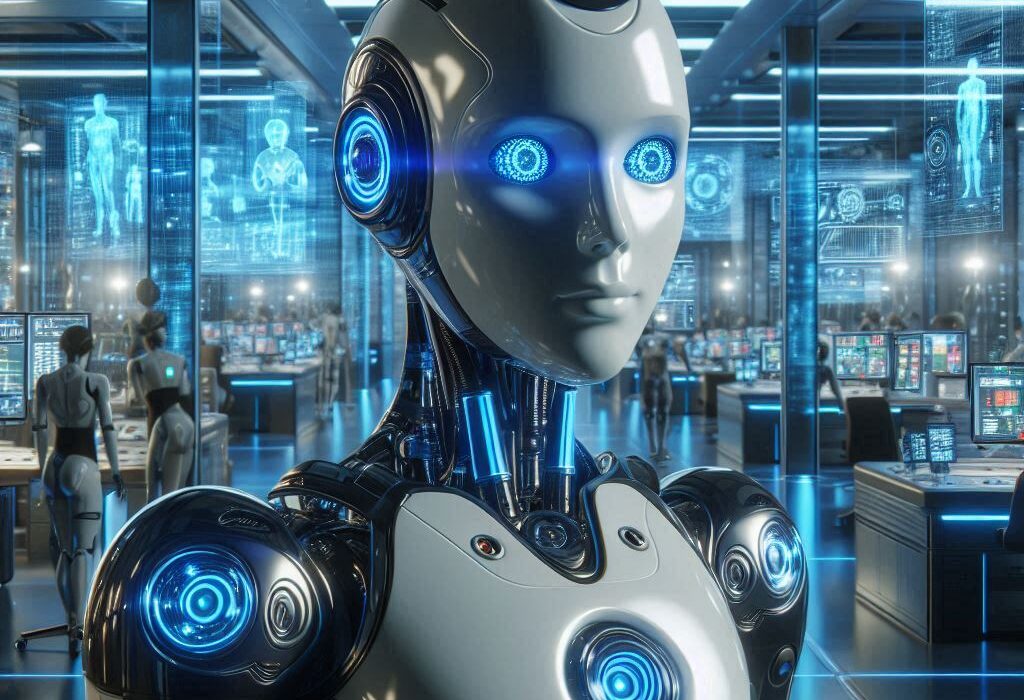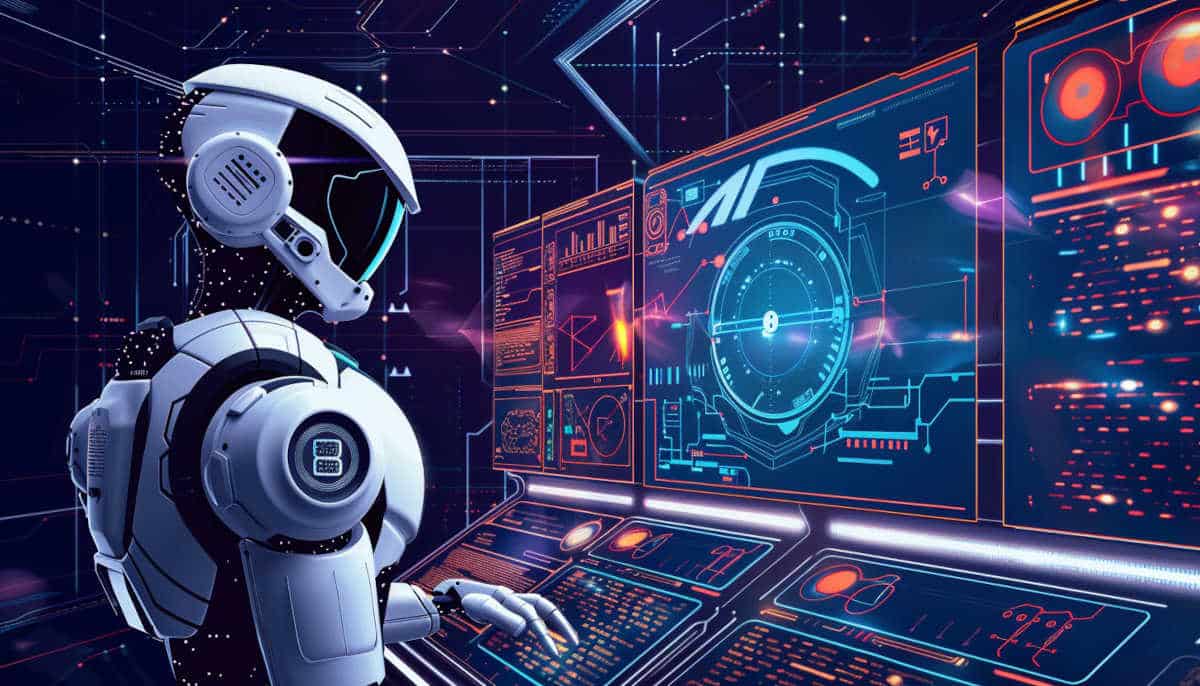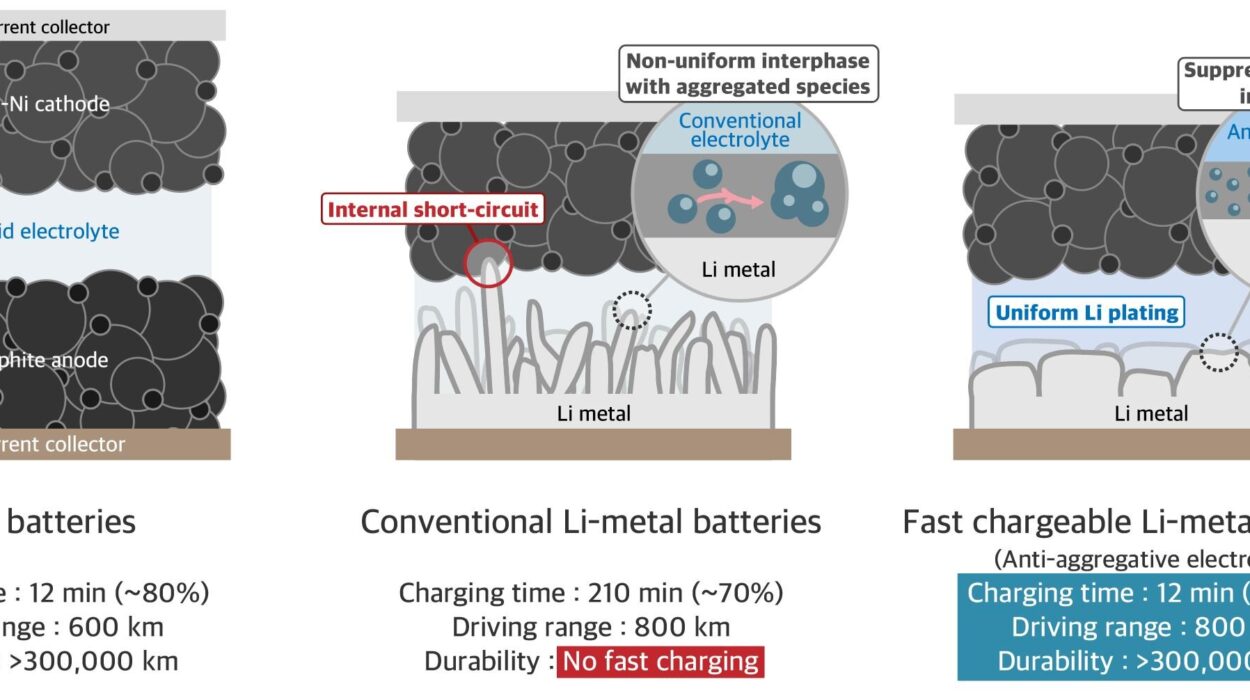In the 21st century, healthcare is undergoing a technological transformation unlike any seen before. Two powerful forces—Artificial Intelligence (AI) and robotics—are not only reshaping the way care is delivered, but also fundamentally altering the experience of being a patient, provider, or researcher. The fusion of AI’s brainpower with robotics’ mechanical precision has ushered in a new era where machines assist in surgeries, diagnose diseases, deliver medication, and offer companionship to the elderly.
This collaboration between intelligent software and physical machines is more than an evolution of medical tools; it’s a reimagining of medicine itself. It’s not just about speeding up tasks or cutting costs—it’s about enhancing the humanity in healthcare by letting technology take on what humans struggle to manage alone. In this exploration, we dive into how AI and robotics are working hand in hand across every corner of healthcare—from operating rooms to nursing homes—and what this convergence means for the future of medicine.
The Surgical Synergy: Robotic Precision Guided by AI
Imagine a surgeon performing a complex operation not with their hands directly, but through robotic arms that mimic their movements with millimeter-level precision. These machines do not tremble. They do not fatigue. And they can be guided by real-time data analysis and predictive algorithms. This is not science fiction—it’s robotic-assisted surgery, and it’s already transforming operating rooms around the world.
The da Vinci Surgical System is perhaps the most famous example. While the robot doesn’t operate independently, it enhances the surgeon’s capabilities. But when AI enters the scene, the story becomes even more compelling. AI systems can analyze thousands of past surgeries, learning patterns of success and failure. This information can then assist the robotic system in anticipating surgical steps, adjusting techniques, or alerting to potential complications in real time.
These AI-enhanced robotic systems promise shorter recovery times, fewer complications, and more personalized procedures. One day, AI might analyze a patient’s genetics, imaging scans, and medical history to tailor every move the robot makes during surgery—offering ultra-precision in ways no human could manage alone.
Diagnosis by Algorithm: AI’s Superpower in Pattern Recognition
While robotics handles the physical, AI excels at the mental—the ability to process and interpret enormous amounts of data. Healthcare is drowning in data: from X-rays and MRIs to electronic health records and genomic sequences. Extracting meaningful insights from this deluge is where AI shines.
Take radiology as an example. AI algorithms can scan images to detect abnormalities such as tumors, fractures, or infections with accuracy that rivals or even surpasses human experts. Google’s DeepMind developed an AI that could outperform radiologists in diagnosing breast cancer from mammograms. In ophthalmology, AI tools can identify early signs of diabetic retinopathy, sometimes years before symptoms appear.
These systems are not replacing doctors but enhancing them—offering second opinions, highlighting concerns, and reducing diagnostic errors. When paired with robotic diagnostic tools—like autonomous ultrasound machines or AI-directed biopsy robots—the combination becomes a powerful team.
Imagine a patient walking into a mobile diagnostic unit, where a robot performs scans and collects blood. AI analyzes the data in real time, provides a preliminary diagnosis, and sends it to a human physician for confirmation. Fast, accurate, and scalable, this blend could bring high-quality diagnostics to remote and underserved regions around the globe.
Personalized Medicine and AI-Driven Treatment Plans
No two patients are exactly alike, and medicine is moving away from one-size-fits-all approaches. AI is at the forefront of personalized medicine—developing treatment plans that consider each patient’s unique biology, lifestyle, and medical history.
AI systems can analyze data from wearable devices, genetic tests, lab results, and more to build a comprehensive profile of an individual. From this, they can suggest the most effective therapies, dosages, and even predict how a patient might respond to specific drugs.
In oncology, for example, AI is being used to match cancer patients with the best possible treatment based on genetic markers in their tumor. IBM’s Watson for Oncology has helped oncologists sift through vast amounts of medical literature and clinical trials to recommend personalized cancer therapies.
When robotics enters this equation, the results are even more impactful. Robotic systems can deliver targeted therapies—like injecting chemotherapy drugs directly into a tumor site with millimetric accuracy, guided by AI analytics. Together, AI and robotics are shifting the balance from reactive care to proactive, individualized treatment.
Elder Care and Companionship Robots
Healthcare is not just about curing diseases—it’s about care in the truest sense. With aging populations worldwide, elder care has become one of the biggest challenges of modern healthcare. Here too, AI and robotics are forming a powerful alliance.
Social robots like Paro, the robotic seal, or ElliQ, the AI companion, are designed not just to monitor health but to provide emotional support. These robots use AI to recognize speech, detect emotional cues, and respond appropriately, offering comfort and reducing loneliness. They remind seniors to take their medication, guide them through exercises, and even initiate conversations to keep their minds active.
Other robots, like Care-O-bot or Mabu, serve as in-home assistants, using AI to track health metrics, set reminders, and communicate with caregivers. In nursing homes, robotic aides help with mobility, lifting, and feeding—reducing physical strain on human staff and ensuring consistent care.
By combining the empathetic AI of voice recognition and language processing with the physical presence of robots, elder care is becoming more accessible, responsive, and human-centric.
Hospital Logistics and Robotic Workflow
Hospitals are complex ecosystems where efficiency is critical. Every delay, every miscommunication, can impact patient outcomes. Robotics and AI are revolutionizing logistics—from transporting supplies to managing inventory and sterilization.
Autonomous robots like TUG by Aethon navigate hospital corridors, delivering medication, linens, and meals. They use AI to avoid obstacles, plan efficient routes, and interact with humans naturally. These robots work 24/7, freeing up nurses and staff to focus on patient care.
AI systems also manage supply chains—predicting shortages, optimizing resource use, and coordinating across departments. In the operating room, robotic systems sterilize instruments and prep rooms between surgeries with minimal human intervention, increasing turnover efficiency.
These behind-the-scenes applications might not make headlines, but they are critical to the smooth functioning of healthcare institutions. AI and robotics together are transforming hospitals into smart, self-regulating environments.
Telemedicine and Remote Robotic Care
The COVID-19 pandemic accelerated the adoption of telemedicine, showing the world that quality healthcare can transcend geography. Now, AI and robotics are extending the reach of doctors even further.
Robotic telepresence systems—like the InTouch Health robot—allow doctors to virtually examine patients, interact with staff, and even participate in surgeries from miles away. These robots are equipped with cameras, microphones, and diagnostic tools, while AI provides support by pulling up patient histories or suggesting treatments in real time.
In rural or conflict zones where specialists are scarce, robotic arms can be operated remotely by surgeons, guided by high-speed internet and AI-assisted imaging. Combined with machine learning, these systems can self-correct movements or assist with steadying hands in delicate procedures.
This fusion of remote connectivity and autonomous intelligence ensures that expertise is no longer bound by physical location, democratizing access to high-quality care around the globe.
AI in Drug Discovery and Pharmaceutical Robotics
Developing new drugs is a long, expensive process, often taking over a decade and billions of dollars. AI is drastically reducing this timeline by predicting molecular interactions, simulating trials, and identifying promising compounds faster than ever before.
Deep learning algorithms analyze massive chemical datasets, identifying potential drug candidates that traditional methods might overlook. AI can model how drugs interact with proteins, forecast side effects, and even repurpose existing drugs for new uses.
Pharmaceutical robotics then takes over, automating the synthesis and testing of these compounds. Robotic arms prepare chemical reactions, conduct assays, and compile data at a scale no human lab could match. In this closed-loop system, AI analyzes the results and refines the next round of experiments.
This rapid, iterative process—sometimes called “self-driving labs”—could lead to breakthroughs in treatments for diseases like Alzheimer’s, cancer, and rare genetic disorders. The synergy of AI and robotics is making drug discovery faster, cheaper, and more precise than ever before.
Training the Next Generation of Healthcare Providers
Medical training is another area being transformed by AI and robotics. Virtual reality simulators, powered by AI, are offering realistic training environments where students can practice surgeries, diagnose virtual patients, and even respond to emergency scenarios.
These simulations adapt in real time based on the student’s performance. AI algorithms assess decisions, offer feedback, and modify the difficulty level to suit individual learning styles. Robotic mannequins, like those used in trauma response training, can mimic human responses such as bleeding, breathing, and vocalizing pain—helping trainees gain hands-on experience without risking lives.
By incorporating robotics and AI into medical education, future healthcare providers are learning not only how to use these tools but how to work alongside them. It’s a partnership that begins in the classroom and extends into every corner of their careers.
Ethical Frontiers and Human Trust
As with any powerful technology, the collaboration between AI and robotics in healthcare brings ethical questions. Who is responsible if an AI-assisted diagnosis is wrong? Can patients trust a robot with their care? How do we ensure privacy, transparency, and fairness?
The answers lie in thoughtful design and regulation. AI systems must be explainable—able to justify their decisions in human terms. Robotic systems must be safe, reliable, and designed to augment—not replace—human compassion.
Transparency in data handling, consent in AI monitoring, and oversight in autonomous decisions are essential. Building trust is not just a technical challenge, but a moral one.
Crucially, AI and robotics should not depersonalize medicine. They should empower human caregivers to spend more time with patients, not less. They should eliminate the drudgery of paperwork, not the empathy of touch. The goal must always be to enhance the human heart of healthcare—not substitute for it.
The Road Ahead: A Human-Machine Healthcare Ecosystem
We are standing at the threshold of a new medical era—one where the best of human intuition meets the best of machine intelligence. AI and robotics, working in tandem, are reshaping healthcare into something more precise, more proactive, and more personal.
In the future, we might see autonomous diagnostic pods on street corners, robotic surgeons in rural clinics, AI counselors offering mental health support, and wearable devices that communicate directly with treatment bots. Diseases might be caught before symptoms appear. Surgeries might be conducted without a scalpel. And care might reach every corner of the planet—no matter how remote.
This vision is not just about machines. It’s about partnership. About creating systems where humans and technology complement each other, each doing what they do best. The convergence of AI and robotics in healthcare is not the replacement of human care—it’s the reinvention of it.
